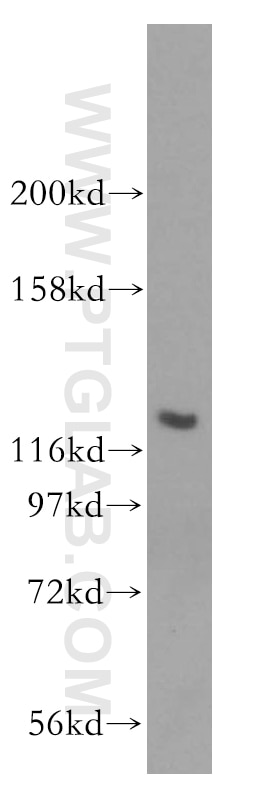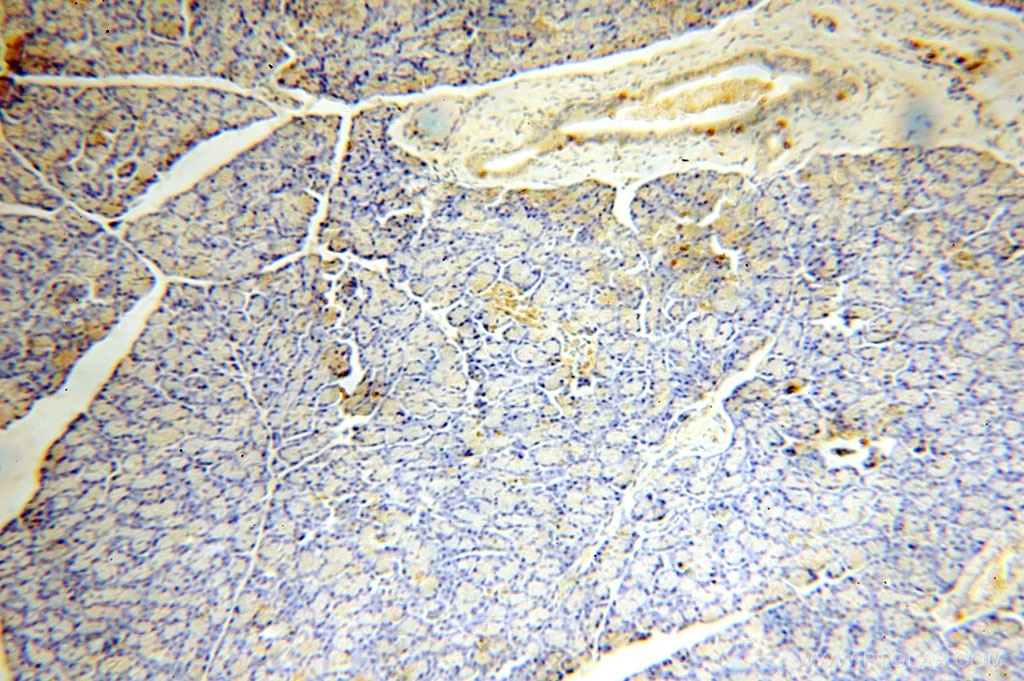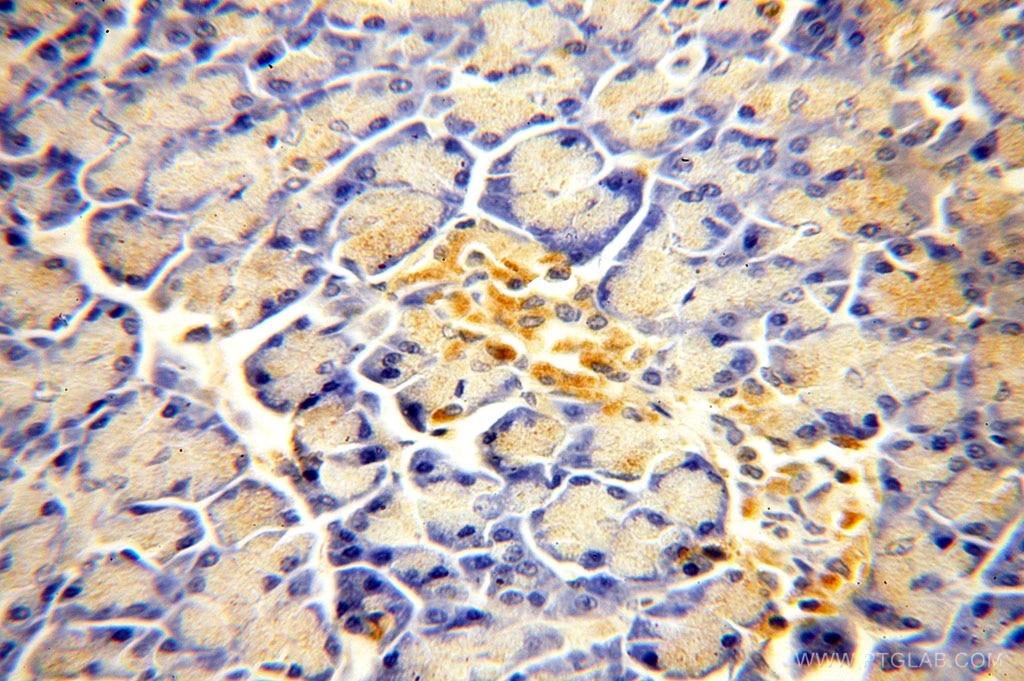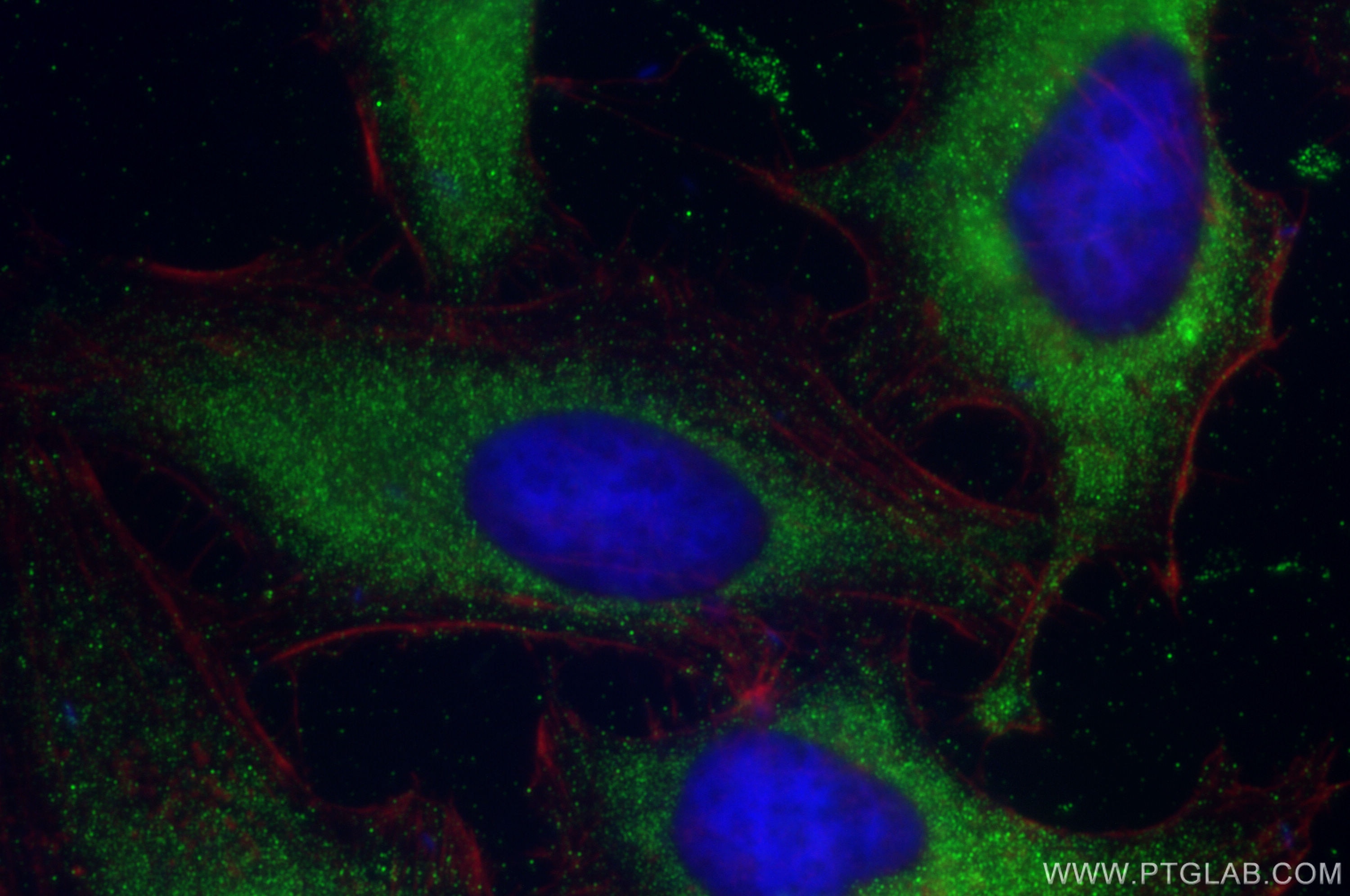ACAD10 Polyklonaler Antikörper
ACAD10 Polyklonal Antikörper für WB, IHC, IF/ICC, ELISA
Wirt / Isotyp
Kaninchen / IgG
Getestete Reaktivität
human, Maus, Ratte
Anwendung
WB, IHC, IF/ICC, ELISA
Konjugation
Unkonjugiert
Kat-Nr. : 17161-1-AP
Synonyme
Geprüfte Anwendungen
| Erfolgreiche Detektion in WB | Mausmilzgewebe |
| Erfolgreiche Detektion in IHC | humanes Pankreasgewebe Hinweis: Antigendemaskierung mit TE-Puffer pH 9,0 empfohlen. (*) Wahlweise kann die Antigendemaskierung auch mit Citratpuffer pH 6,0 erfolgen. |
| Erfolgreiche Detektion in IF/ICC | HeLa-Zellen |
Empfohlene Verdünnung
| Anwendung | Verdünnung |
|---|---|
| Western Blot (WB) | WB : 1:500-1:1000 |
| Immunhistochemie (IHC) | IHC : 1:20-1:200 |
| Immunfluoreszenz (IF)/ICC | IF/ICC : 1:200-1:800 |
| It is recommended that this reagent should be titrated in each testing system to obtain optimal results. | |
| Sample-dependent, check data in validation data gallery | |
Veröffentlichte Anwendungen
| KD/KO | See 1 publications below |
| WB | See 1 publications below |
Produktinformation
17161-1-AP bindet in WB, IHC, IF/ICC, ELISA ACAD10 und zeigt Reaktivität mit human, Maus, Ratten
| Getestete Reaktivität | human, Maus, Ratte |
| In Publikationen genannte Reaktivität | human, Maus |
| Wirt / Isotyp | Kaninchen / IgG |
| Klonalität | Polyklonal |
| Typ | Antikörper |
| Immunogen | ACAD10 fusion protein Ag10510 |
| Vollständiger Name | acyl-Coenzyme A dehydrogenase family, member 10 |
| Berechnetes Molekulargewicht | 26 kDa, 119 kDa |
| Beobachtetes Molekulargewicht | 119 kDa |
| GenBank-Zugangsnummer | BC015056 |
| Gene symbol | ACAD10 |
| Gene ID (NCBI) | 80724 |
| Konjugation | Unkonjugiert |
| Form | Liquid |
| Reinigungsmethode | Antigen-Affinitätsreinigung |
| Lagerungspuffer | PBS with 0.02% sodium azide and 50% glycerol |
| Lagerungsbedingungen | Bei -20°C lagern. Nach dem Versand ein Jahr lang stabil Aliquotieren ist bei -20oC Lagerung nicht notwendig. 20ul Größen enthalten 0,1% BSA. |
Hintergrundinformationen
ACAD10(Acyl-CoA dehydrogenase family member 10) belongs to the acyl-CoA dehydrogenase family. ACAD10 has significant activity towards the branched-chain substrates R and S, 2 methyl-C15-CoA and is highly expressed in fetal but not adult brain. This pattern of expression is similar to that of LCAD, another ACAD previously shown to be involved in long branched chain fatty acid metabolism(PMID:21237683). It has 4 isoforms produced by alternative splicing.
Protokolle
| PRODUKTSPEZIFISCHE PROTOKOLLE | |
|---|---|
| WB protocol for ACAD10 antibody 17161-1-AP | Protokoll herunterladen |
| IHC protocol for ACAD10 antibody 17161-1-AP | Protokoll herunterladenl |
| IF protocol for ACAD10 antibody 17161-1-AP | Protokoll herunterladen |
| STANDARD-PROTOKOLLE | |
|---|---|
| Klicken Sie hier, um unsere Standardprotokolle anzuzeigen |





